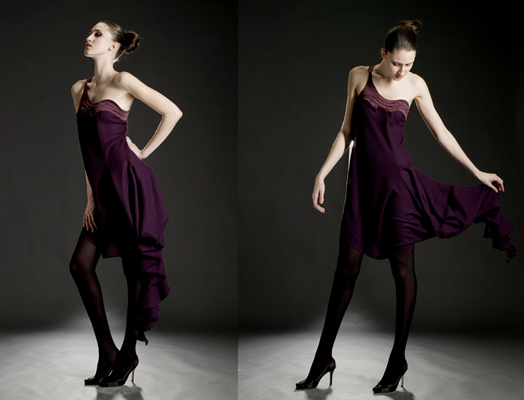
Wednesday, February 27, 2008
FaShIon DeSiGneR
A Day in the Life
Ever wonder what Giorgio Armani, Betsey Johnson, Donna Karan, and Ralph Lauren do all the time? Work! Few other professions depend so much on keeping on top of fickle popular opinion and watching what competitors produce. The life of a designer is intimately linked to tastes and sensibilities that change at a moment’s notice, and he or she must be able to capitalize on or—even better—influence those opinions. Designers reflect society’s sensibilities through clothing design. “You have to know just about everything that’s been done before so that you can recognize it when it becomes popular again,” wrote one respondent. Fashion designers are involved in every phase of designing, showing, and producing all types of clothing, from bathing suits to evening gowns. Those with talent, vision, determination, and ambition can succeed in this difficult, demanding, and highly competitive industry. Fashion design can be more glamorous than a 1940s Hollywood musical or drearier than a bank statement, but it’s always taxing. A designer’s day includes reading current fashion magazines, newspapers, and other media that reflect current trends and tastes. He or she looks at materials, attends fashion shows, and works with other designers on projects. A designer should be able to communicate his or her philosophy, vision, and capabilities clearly and comprehensively through sketches, discussions, and, occasionally, samples. No matter what his or her personal style is, a designer must produce a creative, exciting, and profitable product line. As in most professions that produce superstars, it is easy for a competent but otherwise unremarkable designer to wallow in obscurity, designing small pieces of collections, generic lines (the plain white boxer short, for example), or specialties (cuffs, ruffles, etc.). The personality that raises itself above this level must be as large as the vision of the designer; perhaps that’s why the word “crazy” showed up in more than 75 percent of our surveys as a plus in fashion design.
Ever wonder what Giorgio Armani, Betsey Johnson, Donna Karan, and Ralph Lauren do all the time? Work! Few other professions depend so much on keeping on top of fickle popular opinion and watching what competitors produce. The life of a designer is intimately linked to tastes and sensibilities that change at a moment’s notice, and he or she must be able to capitalize on or—even better—influence those opinions. Designers reflect society’s sensibilities through clothing design. “You have to know just about everything that’s been done before so that you can recognize it when it becomes popular again,” wrote one respondent. Fashion designers are involved in every phase of designing, showing, and producing all types of clothing, from bathing suits to evening gowns. Those with talent, vision, determination, and ambition can succeed in this difficult, demanding, and highly competitive industry. Fashion design can be more glamorous than a 1940s Hollywood musical or drearier than a bank statement, but it’s always taxing. A designer’s day includes reading current fashion magazines, newspapers, and other media that reflect current trends and tastes. He or she looks at materials, attends fashion shows, and works with other designers on projects. A designer should be able to communicate his or her philosophy, vision, and capabilities clearly and comprehensively through sketches, discussions, and, occasionally, samples. No matter what his or her personal style is, a designer must produce a creative, exciting, and profitable product line. As in most professions that produce superstars, it is easy for a competent but otherwise unremarkable designer to wallow in obscurity, designing small pieces of collections, generic lines (the plain white boxer short, for example), or specialties (cuffs, ruffles, etc.). The personality that raises itself above this level must be as large as the vision of the designer; perhaps that’s why the word “crazy” showed up in more than 75 percent of our surveys as a plus in fashion design.
Sunday, February 17, 2008
BELOVED
When slavery has torn apart one's heritage, when the past is more real than the present, when the rage of a dead baby can literally rock a house, then the traditional novel is no longer an adequate instrument. And so Pulitzer Prize-winner Beloved is written in bits and images, smashed like a mirror on the floor and left for the reader to put together. In a novel that is hypnotic, beautiful, and elusive, Toni Morrison portrays the lives of Sethe, an escaped slave and mother, and those around her. There is Sixo, who "stopped speaking English because there was no future in it," and .... Baby Suggs, who makes her living with her heart because slavery "had busted her legs, back, head, eyes, hands, kidneys, womb and tongue;" and Paul D, a man with a rusted metal box for a heart and a presence that allows women to cry. At the center is Sethe, whose story makes us think and think again about what we mean when we say we love our children or freedom. The stories circle, swim dreamily to the surface, and are suddenly clear and horrifying. Because of the extraordinary, experimental style as well as the intensity of the subject matter, what we learn from them touches at a level deeper than understanding.
Subscribe to:
Posts (Atom)



